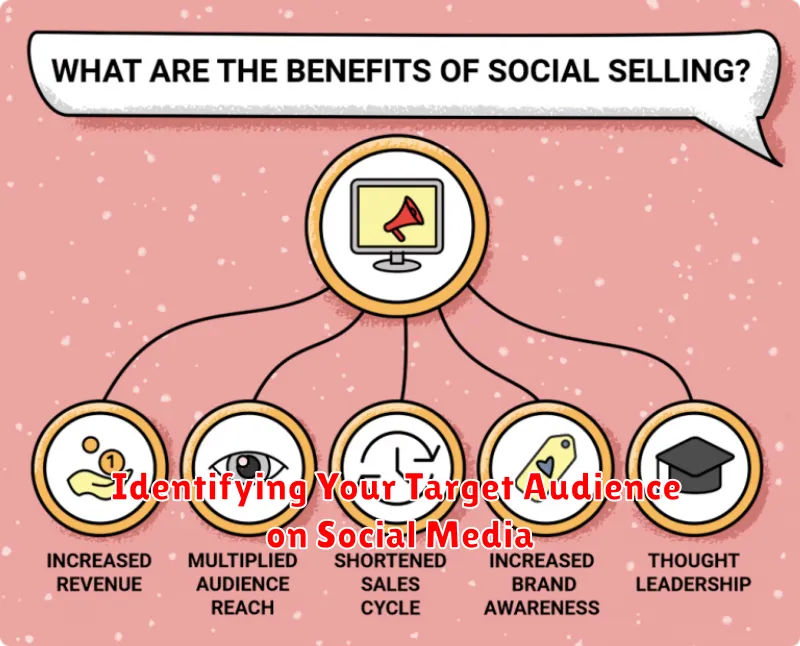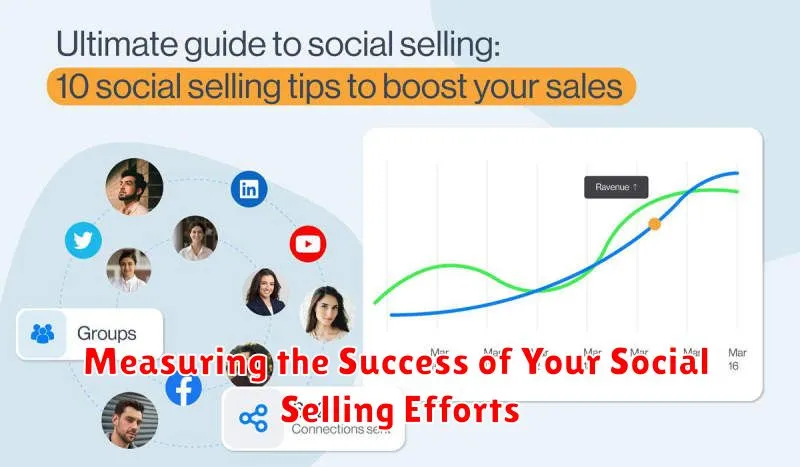In today’s digital landscape, social selling has emerged as a powerful strategy for businesses to connect with their target audience, build meaningful relationships, and ultimately, drive sales. It’s no longer enough to simply broadcast marketing messages; social selling empowers sales professionals to engage in personalized interactions, establish themselves as thought leaders, and nurture leads through the sales funnel. This approach leverages the power of social media platforms like LinkedIn, Twitter, and Facebook to identify prospects, understand their needs, and offer tailored solutions. Are you ready to unlock the power of social selling and transform your sales process?
This comprehensive guide will delve into the core principles of effective social selling, providing practical strategies and actionable insights to help you succeed. Learn how to identify and engage with potential customers, build strong relationships based on trust and value, and generate high-quality leads that convert into sales. We’ll explore how to leverage social listening to understand your audience, create compelling content that resonates with their needs, and ultimately position yourself as a trusted advisor. Discover how to optimize your social media presence for sales success and harness the power of social selling to achieve significant business growth.
What is Social Selling?
Social selling is the process of developing relationships as part of the sales process. It’s not about pitching your products aggressively. Instead, it’s about using social media platforms to connect with potential customers, build trust, provide valuable insights, and ultimately position yourself as a resource and a solution provider.
Think of social selling as relationship-focused selling. You’re leveraging social media platforms like LinkedIn, Twitter, and Facebook to engage in conversations, answer questions, and share relevant content that resonates with your target audience. It’s about building rapport and demonstrating expertise, which in turn can lead to new business opportunities.
Social selling differs from traditional advertising or cold calling. It’s about cultivating genuine connections and offering value. It’s about being present and helpful in the online spaces where your potential customers spend their time. By actively engaging in conversations and sharing valuable content, you can position yourself as a trusted advisor and ultimately generate leads and drive sales.
The Benefits of Social Selling
Social selling offers numerous advantages for businesses and sales professionals. It allows for increased brand visibility and reach, putting your brand in front of a wider audience of potential customers on platforms they actively use. This organic exposure builds brand awareness and establishes you as a presence in your industry.
Generating high-quality leads is a key benefit. By engaging with potential customers and sharing valuable content, you attract those who have a genuine interest in your offerings, leading to more qualified leads and higher conversion rates. Building stronger customer relationships is another significant advantage. Social selling facilitates personalized interactions and fosters trust, resulting in long-term loyalty.
Reduced marketing costs can be achieved. While some investment in social selling tools may be necessary, the organic nature of the strategy can often prove more cost-effective than traditional advertising methods. Lastly, social selling provides valuable insights into customer behavior and market trends. By monitoring conversations and analyzing social media data, you gain a better understanding of your target audience’s needs and preferences.
Building a Strong Social Selling Strategy
A successful social selling strategy requires careful planning and execution. It’s not about haphazardly posting on social media, but rather a structured approach that aligns with your overall sales goals.
Begin by defining clear objectives. What do you hope to achieve with social selling? Increased brand awareness? More qualified leads? A higher conversion rate? Having specific, measurable goals will guide your efforts.
Next, identify the social media platforms where your target audience is most active. Focus your energy on those platforms rather than spreading yourself too thin. Develop a content calendar to ensure consistent posting and engagement. This will help you stay organized and maintain a regular presence.
Integrate your social selling activities with your CRM (Customer Relationship Management) system. This will allow you to track interactions, manage leads, and measure the effectiveness of your efforts. Finally, dedicate time to analyze your results. Track key metrics, identify what’s working, and adjust your strategy as needed.
Identifying Your Target Audience on Social Media

Identifying your target audience is crucial for effective social selling. It’s about understanding who your ideal customers are and where they spend their time online. Without this knowledge, your efforts will be scattered and ineffective.
Start by analyzing your existing customer base. Look for common characteristics like demographics, job titles, industries, and interests. This information provides a foundation for building your ideal customer profile.
Next, research your competitors’ followers. Which social media platforms do they use? What kind of content do they engage with? This competitive analysis can reveal valuable insights into your target audience’s online behavior.
Social listening tools can help you track keywords and hashtags relevant to your industry. This allows you to identify conversations and individuals who are actively discussing topics related to your products or services. This information can help you refine your target audience and tailor your content to their specific needs and interests.
Creating Engaging Content for Social Selling
Engaging content is the cornerstone of successful social selling. It’s the vehicle that allows you to connect with your target audience, establish your expertise, and nurture relationships. Content must be valuable and relevant to resonate with your prospects.
Focus on providing insights, sharing industry news, and addressing your audience’s pain points. Ask open-ended questions to encourage interaction and spark conversations. Vary your content formats. Use a mix of text, images, and videos to keep your audience interested and cater to different learning styles. Consider incorporating short videos offering tips or explaining complex concepts. Infographics can be highly effective for presenting data in a visually appealing manner.
Consistency is key to maintaining visibility and staying top-of-mind. Develop a content calendar to plan and schedule your posts. This ensures a steady flow of valuable content reaching your audience. Finally, always prioritize quality over quantity. It’s better to share a few well-crafted pieces of content than to inundate your audience with irrelevant or poorly produced material.
Leveraging Social Listening for Social Selling Success
Social listening is a critical component of effective social selling. It involves actively monitoring social media conversations and trends relevant to your industry, target audience, and competitors.
By understanding the discussions happening online, you gain valuable insights into the needs, pain points, and preferences of your potential customers. This information allows you to tailor your approach and personalize your interactions, making your social selling efforts more impactful.
Effective social listening enables you to identify sales opportunities, build relationships with key influencers, and manage your brand reputation. It helps you stay ahead of the curve, adapt to market changes, and position yourself as a valuable resource within your industry.
Through social listening, you can:
- Identify prospects actively seeking solutions you offer.
- Monitor competitor activity and identify gaps in the market.
- Join relevant conversations and contribute valuable insights.
- Track industry trends and adjust your sales strategy accordingly.
Building Relationships with Potential Customers on Social Media
Building relationships is the cornerstone of social selling. It’s not about aggressively pushing your product or service, but about fostering genuine connections. Engagement is key. Respond to comments and messages promptly, participate in relevant discussions, and share valuable content that resonates with your target audience.
Personalized interaction is crucial. Take the time to learn about your prospects. Understand their needs and challenges. Tailor your communication accordingly. Avoid generic messages. Instead, focus on providing valuable insights and demonstrating your expertise.
Providing value is paramount. Share helpful resources, offer advice, and answer questions. Position yourself as a trusted advisor. This builds credibility and strengthens relationships, making prospects more receptive to your offerings when the time is right.
Remember, building relationships takes time and consistent effort. Nurturing leads is an ongoing process. Stay top-of-mind by regularly engaging with your prospects and providing valuable content.
Measuring the Success of Your Social Selling Efforts

Measuring the success of your social selling initiatives is crucial to understanding what’s working and what needs improvement. It’s not enough to simply be active on social media; you need to track key performance indicators (KPIs) to demonstrate the return on investment (ROI) of your efforts.
Start by defining your objectives. Are you aiming to increase brand awareness, generate leads, or drive sales? Different objectives require different metrics.
Some important KPIs to consider include:
- Social engagement: Likes, comments, shares, and retweets indicate audience interest and content effectiveness.
- Reach and impressions: How many people are seeing your content?
- Website traffic from social media: How much traffic is driven to your website from your social selling activities?
- Lead generation: How many leads are you capturing through social media interactions?
- Sales conversions: How many leads generated through social selling are converting into actual sales?
Regularly monitor these KPIs and adjust your strategy as needed. Utilize analytics platforms provided by each social media network to gather data and gain actionable insights.
Tools and Technologies for Social Selling
Several tools and technologies can significantly enhance your social selling efforts. These platforms streamline processes, provide valuable insights, and help manage your social presence effectively.
Customer Relationship Management (CRM) systems are essential for organizing lead information and tracking interactions. Integrating your CRM with social media platforms allows for a seamless flow of data and improves sales follow-up.
Social media management platforms help schedule posts, monitor conversations, and analyze engagement across various networks. These tools save time and ensure a consistent brand presence.
Sales intelligence tools provide valuable data on prospects, such as their company, job title, and recent activity. This information can help personalize outreach and tailor your messaging.
Social listening software monitors online conversations relevant to your industry, brand, and competitors. This allows you to identify potential leads, understand market trends, and address customer concerns proactively.
Employee advocacy platforms empower your team to share company content and engage with their networks. This amplifies your reach and builds trust through authentic employee interactions.

